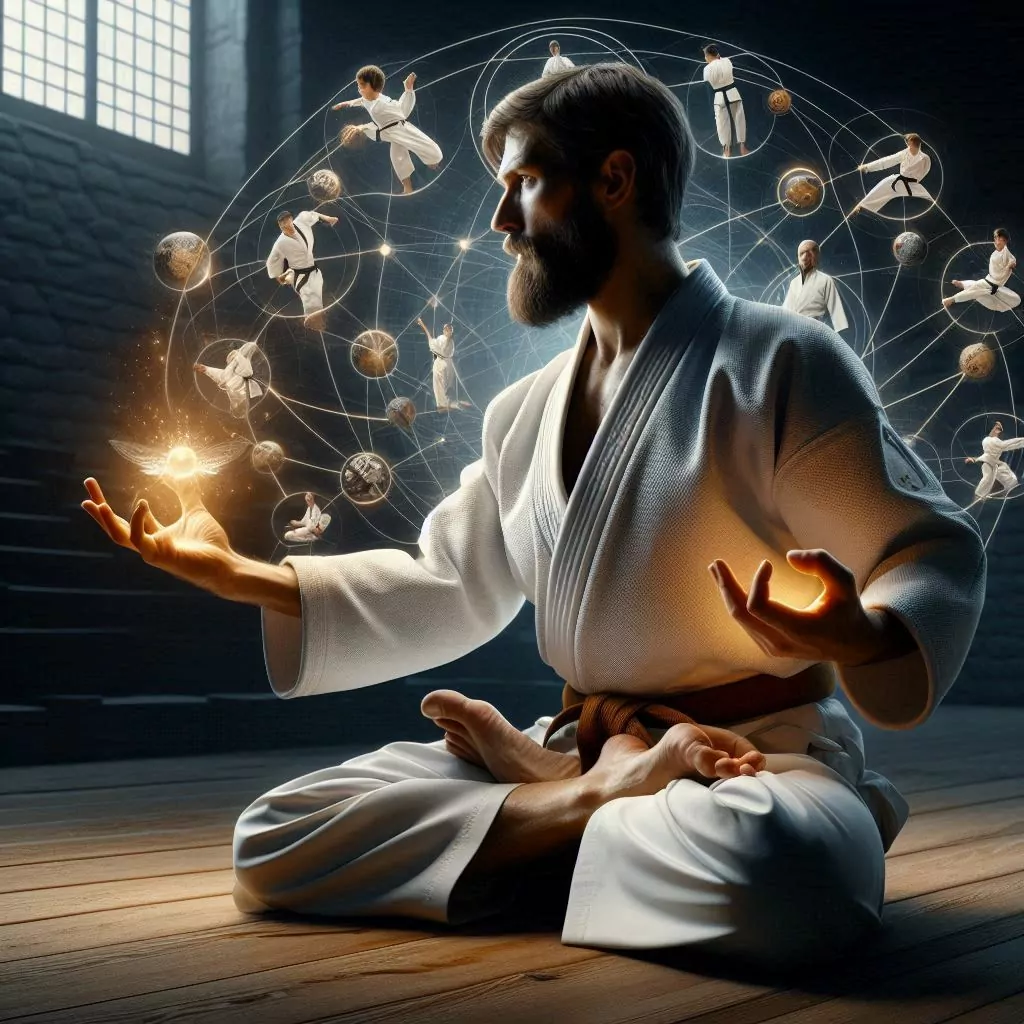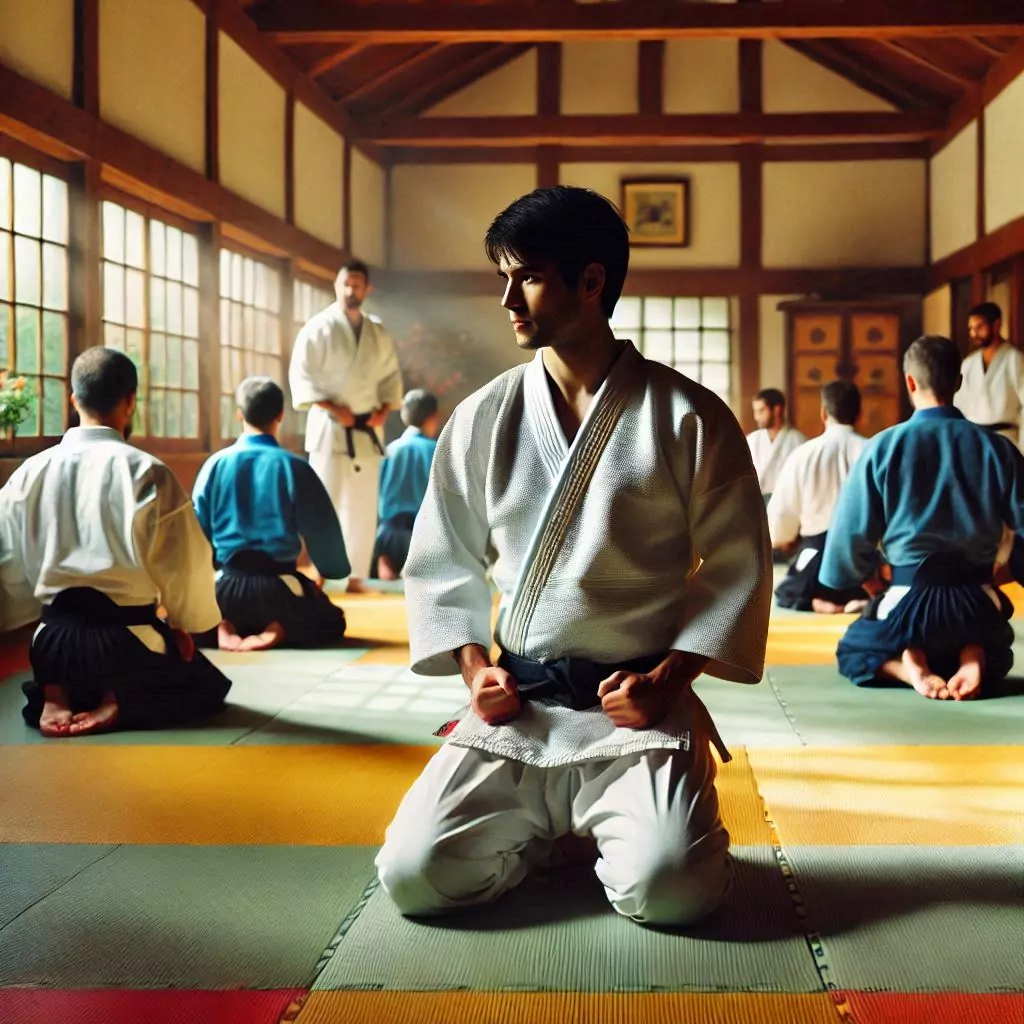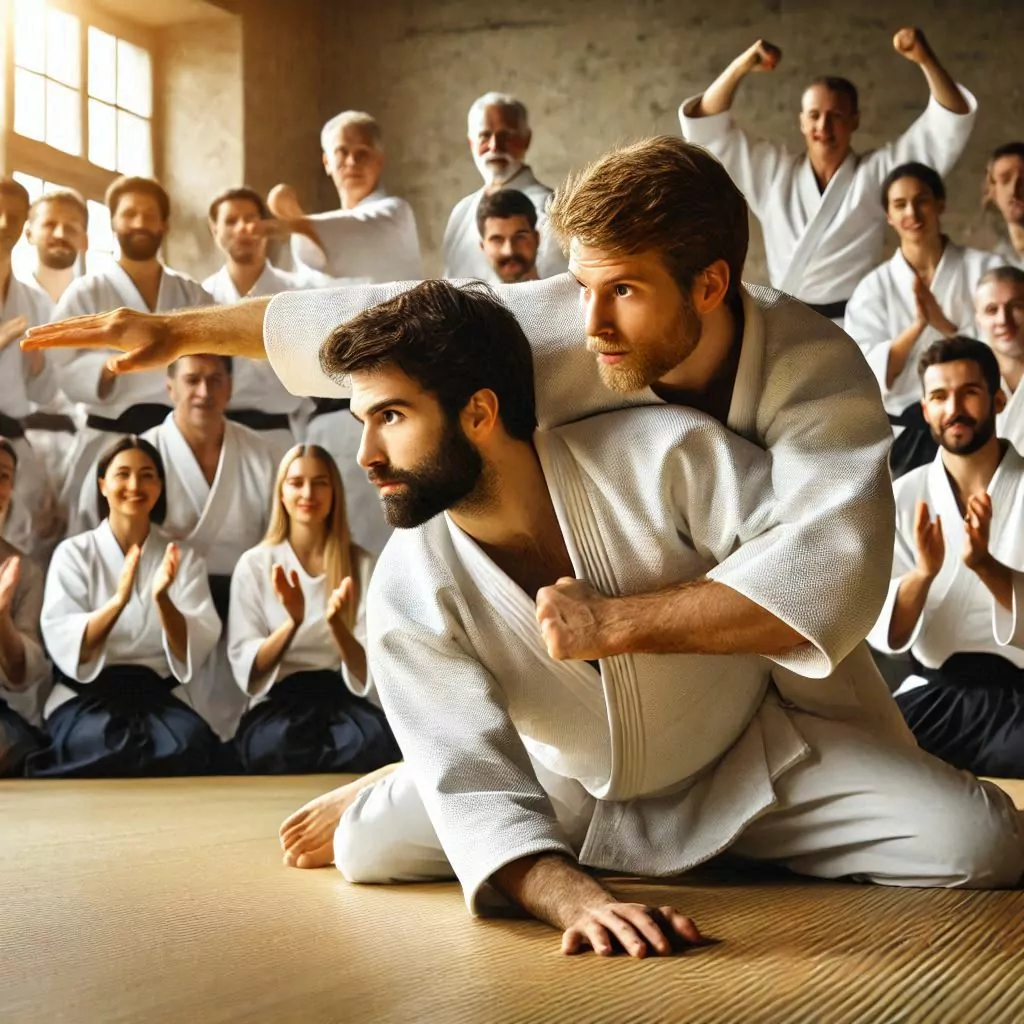
Aikido (Japanese: “the way of combining energy”) is a Japanese martial art. Created by Morihei Ueshiba on the basis of ancient Japanese Jiu-Jitsu techniques. Which were included in the pan-imperial school of Greater Asia. The peculiarity of the art is the use of throws and grabs. One of the East Asian martial arts of self-defense. Thanks to this, Aikido is the way of harmony. Philosophy of self-defense and the art of movement.
In ancient times, perfect mastery of attack and defense techniques, both with and without weapons, was vital for every Japanese warrior. Therefore, fighters trained in various types of martial arts. They passed down the secrets of techniques from father to son, from master to student. Such knowledge was difficult to obtain and was guarded like a great treasure from prying eyes.
Philosophy of self-defense in Aikido

If aikido consisted only of technical techniques, it would not differ much from other areas of jujutsu. But the founder created a philosophy of his school. It determines the method of performing techniques, the sequence of actions and the effectiveness of aikido.
The philosophy of aikido arose in the environment of Eastern philosophy. Thus, the term “ki” (Chinese “chi”) denotes the processes occurring in the human body. “Ki” must flow continuously.
The philosophy of aikido does not focus on the nature or function of “ki”. The main task of aikido is to be able to maintain uniform development, to understand balance in smooth movement (the principle of aiki). It is the study and practice of this skill that is the task of aikidoka. “Do” just indicates that aikido is not a set of techniques that a “positive hero” should use against “hooligans”. Instead, it is a way of thinking that does not assume the emergence of situations when it is necessary to use physical skills. Stopping “ki” is a conflict that must be resolved to restore internal balance.
The hall where classes are held is called a “dojo”. Is covered the floor with mats. The dojo has one side – “shomen” (a portrait of Morihei Ueshiba hangs on the wall, or an image of the inscription “aikido”). On this side sits the “sensei” (teacher), students sit (“seiza”) facing the shomen. In the dojo, everyone must adhere to certain clear rules of conduct, especially after entering the tatami. Before and after classes, a certain ritual is usually performed, symbolizing gratitude to O-sensei, gratitude to the teacher, and respect for each other among aikido practitioners.
The technical arsenal of aikido is the art of movement

The technical arsenal of aikido consists of several components: stances, movements, holds, and techniques themselves. In turn, the arsenal of the latter is logically divided into two large sections: taijutsu (work without weapons) and bukivaza (work with weapons). Taijutsu consists of such concepts as holds (tori), attacks (uti, tsuki). And techniques from front and back holds, strangling holds and attacks. Bukivaza is divided into work with a sword (aikiken), jo (aikijo) and knife and consists of formalized exercises for single execution (suburi) and pair execution (awassa, kumi tachi). There are techniques that combine both divisions with each other (for example, when one of the aikidoes is unarmed and the other is armed, etc.).
The technical arsenal of aikido
Basic techniques:
- Painful techniques — “kanzetsu-waza”
- Throws — “nag-waza”
- Strikes and thrusts — “atewaza”
- Pinching and pressing — “kuicho”
Special techniques:
- Practices with a pole
- Practices with a wooden sword
- Disarming techniques
- Practices for fighting against several opponents
Aikido practice also leads to the physical development of aikido practitioners. Namely, flexibility, endurance, physical strength (but with a moderate emphasis on strength) are significantly improved, in addition, training leads to improved concentration, controlled relaxation, and balance. In aikido techniques, compared to other types of martial arts, pressure and continuation of the partner’s movement are more often used than pulling, hard contact, and forceful confrontation. This difference allows a much wider range of practitioners to practice aikido. In aikido, the main emphasis is on coordination of body movements and balance. In many dojos, each training session begins with a warm-up that includes stretching. And practicing self-protection (somersaults, falls, etc.).
Modern aikido is based on formalized forms (“kata”) performed by two aikidokas together. The training is based on dividing a pair of trainees into “uke” (the attacker). And “nage” (also called “tori” depending on the style). This neutralizes the attack using aikido techniques. It is necessary to realize that “uke” and “nage” are not competitors. Who must defeat the opponent at any cost. But partners who help each other better master the technique.
